Lady Macbeth depicts the journey of Katherine, pursuing her desire after she meets a black servant Sebastian, during her life under patriarchal oppression from her husband Alexander and his father Boris. Although the film is based on Nikolai Leskov’snovel, it has been altered, projecting the unequal act of power, encompassing race, gender, and social-class status through the appearances of animals in each scene.
Among those elements, zooming into a specific scene where Katherine desires to poison her father-in-law Boris, after her relationship with Sebastian was discovered by him, it is found out that a cat is portrayed as more than a simple ‘house pet’, but rather as a complex reflection of the human character’s behavior, emotion, and even moral status, in other words, as Katherine’s dual ego, related to gender power dynamic aspects. When Boris goes into his room after eating the poisoned food, Katherine locks the door from outside to confine him. In this scene, a cat raised in Katherine’s house moves in an elegant way outside the room, as opposed to the brutal atmosphere of the scene and Boris’s horrible choking sound.
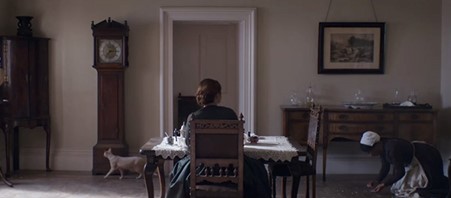
This triumphant and free-spirited appearance of the cat seems to represent Katherine’s mental state and characteristics. Cats have a symbolic connection with powerful and radical femininity in the conventional West world (such as witches) related to their image of elegant prowess. They wait for their prey to approach closer to them and silently hunt them down. And they also have the ability to jump from high places and land lightly without getting any injuries and survive jeopardies. These characteristics of cats were thus associated with magic and wizards in the past. Yet, from another perspective, cats can be seen as a symbol of the divinity of women and independence because according to conventional Western folktales, because if cats were transformation of witches, it would be an opportunity for a ‘wicked’ woman to develop an independent personality and fulfill her experience of genuine individualization (Park).
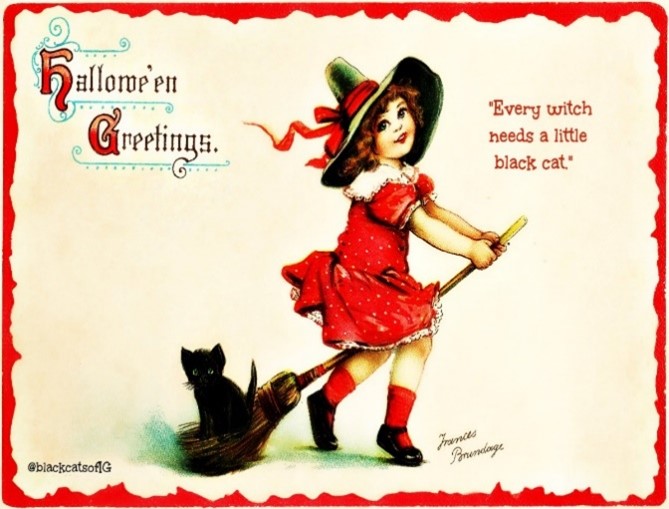
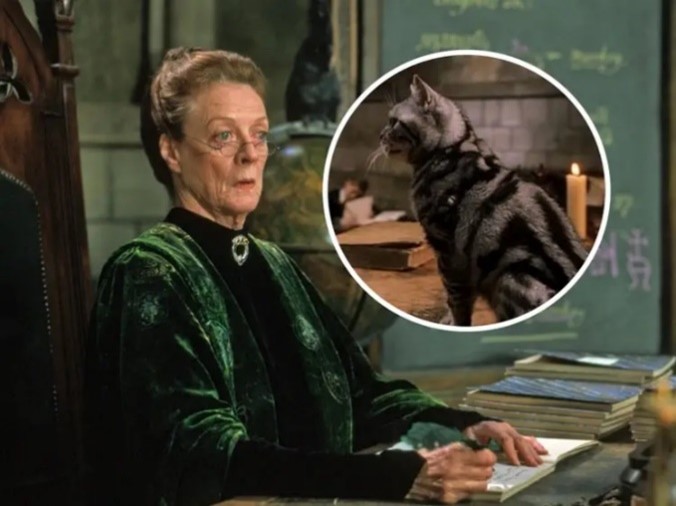
So, connecting with these symbolic meaning cats conveys, the relationship between the cat and Katherine in this film might be projecting the first step she takes to be independent from the patriarchal relationship with her family members and starts to invade the power to become a new head of the household. Katherine was married to an older man who had the money and power to take control over her, treating her in an ‘inhumane’ way. Yet, she gradually experiences freedom and starts to pursue greater desires as she builds a sexual relationship with Sebastian. So when she had her first sexual deviance with Sebastian, the cat was captured on the camera, secretly and covetously eating human food that has been placed on an exquisite plate on the table, as if it is reflecting Katherine’s lustful behavior under a bushel. This is not normal behavior people would generally expect, having an animal on the same table they dine at. Yet in the movie, the cat breaks the tacit agreement, and so does Katherine. As her reflection, now the cat is captured on the same side of a background with her, separated from Boris’s room, representing the (dying) power of patriarchy. Thus, the transposed power relationship in the house seems to be portrayed through this cat, which ambitiously jumps up to the higher wooden console from the ground by taking a powerful leap after the sound of Boris asking for help has finally stopped.
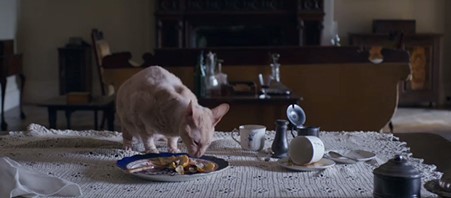
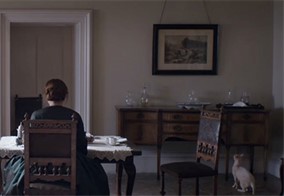
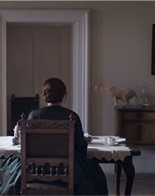
Yet, the cat also seems to be portrayed as a sage, warning Katherine’s immortal behavior. Because throughout the film, the cat hasn’t been portrayed to have a close intense relationship with Katherine, the position the cat shows in this specific part highlights the possibility of the cat having an objective view toward the crime. The camera has filmed the cat as a scene stealer, independently appearing in the film apart from Katherine, enabling the audience to seek a distance from the pet and the owner, unlike other pet-keeping films. Specifically, when Katherine sits still on the chair without being emotionally stirred after Boris has passed out, the camera captures a close-up of the cat sitting on the opposite side of her, like a human. As a result, the cat who has been at the crime scene is now facing Katherine, a criminal, as a witness. Now, the cat has developed to become a moral mirror with clear, transparent eyes, as it looks up at Katherine to awaken her absent or corrupted conscience. This makes sense because the cat only appears until this sequence and then exits from the movie forever as Katherine gradually depraves after a shot of Boris’s funeral.
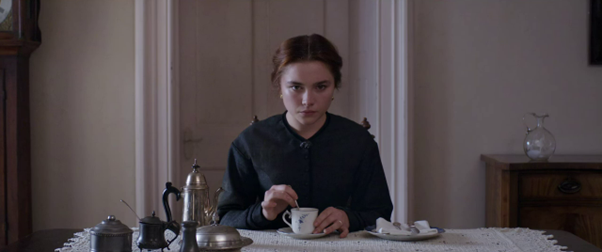
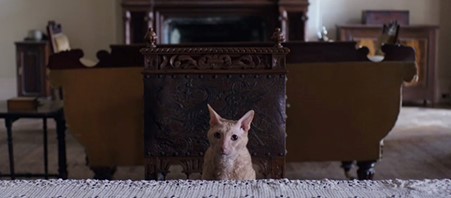
Overall, the use of a cat as a kind of analogue for Katherine throughout this scene has been effective. It might have ended up as a less imaginative and dull way to portray a ‘wicked’ woman figure (who would start to kill or erase members of the household to retrieve one’s freedom and desire) relating to the typical image of a cat (and a witch who would harm the people around them). Yet, since the representation of the cat went beyond just a fundamental iconography of its wickedness image, expanding to the point where the cat is also used as a moral standard that human protagonist might have deep under one’s superego, the animal has received a further role in this film as the dual identity of a human. It has received a new status of a saint, where an animal can throw questions to humans including the audience, whether we should chase our primal instinct and desire (which is considered to be a characteristic that belongs to animals rather than humans) or rather we should respond and act in a rational way. This reversed position of the cat and Katherine, as a saint and a sinner, as a guide and a follower, affect deeply on audiences’ appreciation of the film because after Katherine chose to follow her ‘wild’ lust (not retreating from what she has done; saving Boris), this is where her humanity collapses throughout the rest of the film as the cat exits from this scene forever. The dual identity the cat has as Katherine’s dark desire and pure superego-moral standard breaks the long-standing image of cats as a wicked creature in past literary works and also provide a valid ground for the audiences to evaluate Katherine’s characteristics, because she is doing certain behavior through the film not because she was driven by an evil spirit, but rather purely regarding her self-interest.
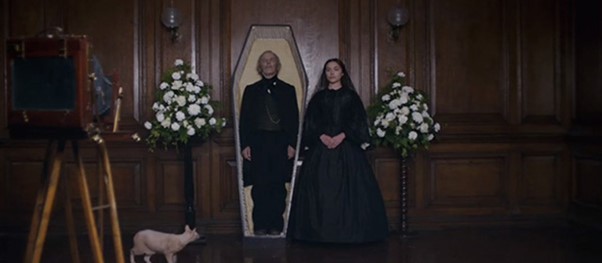
Bibliography
Oldroyd, William, dir., Lady Macbeth (Altitude Film Distribution, 2016)
Park, Ae-kyu. “The Cat: A Symbol of Femininity.” Journal of Symbols & Sandplay Therapy, vol. 6, no. 1, 30 June 2015, pp. 43–61, e-jsst.org/upload/jsst-6-43.pdf, 10.12964/jsst.150003.
Figure 1, 4~9: Cinema Cats, digital photograph, 24 Mar. 2019, <https://cinemacats.com/lady-macbeth-2016/>. [Accessed 1 Nov. 2022].
Figure 2: Cat Wisdom 101, digital photograph, 23 Oct. 2018, <https://catwisdom101.com/vintage-black-cats-witchy_feminist-witches/>. [Accessed 1 Jan. 2023].
Figure 3: INSIDER, digital photograph, 4 Jun. 2019, <https://www.insider.com/harry-potter-characters-patronus-2018-11>. [Accessed 1 Jan. 2023].
